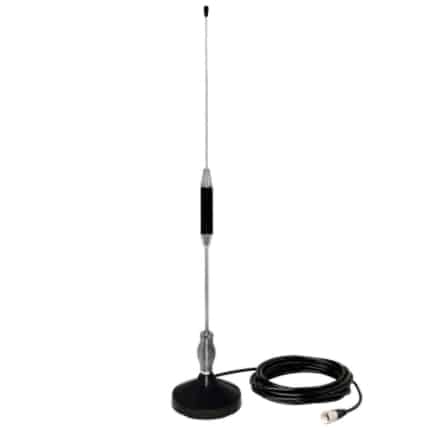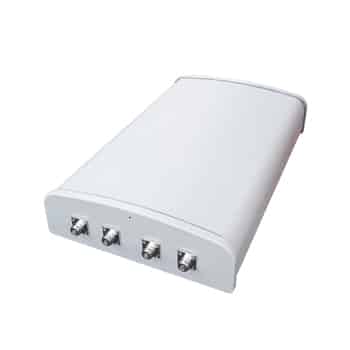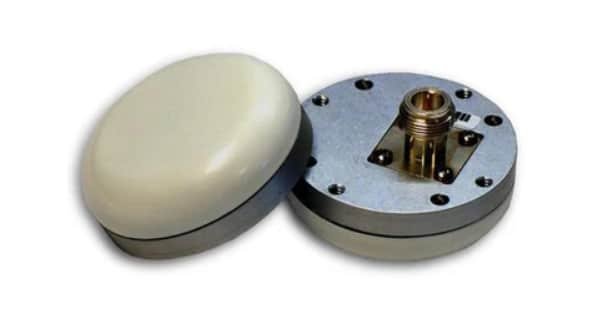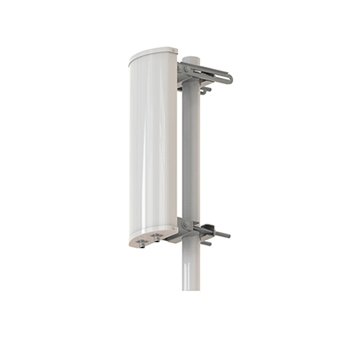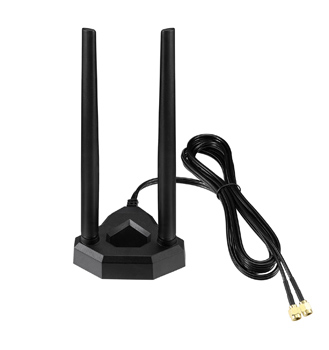
Wireless communication is at the forefront of today’s technology. WiFi technology has revolutionized the way information is exchanged and it has improved rapidly over the last few years. Antennas play a central role in these WiFi systems and they are crucial in determining the efficiency and performance of the overall communication system. A WiFi card is a hardware component that is used to enable wireless connectivity to the internet through a Wireless Local Area Network. WiFi cards can be either built into electronic devices like PCs, laptops etc. or they can be plugged in externally through a connector. WiFi card antennas in particular are antennas that are specifically used in or with WiFi cards to achieve desired performance specifications.
This article will provide an overview of the concept of WiFi card antennas, what they are, their functionality, features, available types, and proper installation and discuss their importance in modern wireless networking.
Table of Contents
ToggleWhat is a WiFi Card Antenna?
A WiFi card is basically a wireless terminal device that can be used to connect to the internet through a wireless connection within the coverage of a local area network. A WiFi card antenna is the small component within the WiFi card or connected externally to it, that is used to transmit and receive signals. The WiFi card antenna plays the key role in WiFi cards by enhancing and optimizing the range, speed, reliability, quality and overall performance and connectivity of the connected device.
WiFi card antennas are generally small and compact in size as they are designed to be used within the constrained sizes of modern electronic devices. WiFi cards are commonly used in most of the day to day electronic devices like laptops, PCs, gaming systems etc. and thus the performance of the WiFi card antenna is extremely vital in determining the overall performance characteristics of such wireless devices.
A WiFi card antenna works by transmitting and receiving radio frequency signals. Basically, an access point or a wireless router converts data from a binary form into radio waves at a specific frequency and broadcasts it through their antennas. Then the WiFi card antenna in devices like laptops or PCs receives these radio frequency signals and converts them into binary language that the device understands.
Types of WiFi Card Antennas
WiFi card antennas can be classified based on their direction in which the antenna focuses the signals received or transmitted as omnidirectional antennas and directional antennas.
Omnidirectional antennas
Omnidirectional WiFi card antennas are devices that are designed to receive and transmit radio signals in all directions equally. They have a 360 degree coverage area. However, since they broadcast signals in all directions, their antenna gain towards a specific direction is relatively lower and their broadcast range or distance is also relatively lower. Omnidirectional WiFi antennas are generally embedded into devices that are general purpose and require connectivity from multiple directions simultaneously or the direction can vary consistently.
Directional antennas
Directional WiFi card antennas target the signals in one specific direction during transmission and receival of signals. They generally have a coverage area of approximately 45 degrees to 90 degrees and hence have a high gain towards the desired direction. Due to the extremely focused signal beam, directional WiFi card antennas are able to transmit or receive data across a longer range or distance. Directional WiFi card antennas are typically used in devices that need a strong signal in a specific direction or need to connect to a distant access point.
WiFi card antennas can also be classified based on the method that the antenna is integrated into a device as external and internal antenna.
External vs. Internal Antennas
External WiFi card antennas are antennas that are fixed or connected outside of the device. This type of antenna generally can provide better gain and a longer transmission range as they are not susceptible to much interference within the device casing. However, as they are attached externally to the device, they are susceptible to more damage and other environmental impacts. External WiFi card antennas have the ability to be modified making them much more ideal for certain use cases where the requirement parameters may change over time. Internal WiFi card antennas are typically embedded into the device itself making them more protected from any external impacts. But, as they are enclosed within the device casing, they are susceptible to more obstacles and interference when communicating with the access point. Deciding between external or internal WiFi antennas depends on each particular use case and its requirements.
Key Features to Consider
- Frequency Bands
Similar to any other WiFi antenna, WiFi card antennas also operate in the standard WiFi frequency bands which are typically considered to be 2.4 GHz, 5 GHz, and 6 GHz. The 2.4 GHz frequency band has a wider coverage area. However, it is used by other technologies such as Zigbee and Bluetooth, making the frequency band more crowded with a large number of devices and hence is subject to more interference from other devices. High amounts of traffic on this frequency band can affect the ability to have reliable and strong connections. The 5 GHz frequency band offers better speeds in signal transmission and receival but has a lower range when compared to the 2.4 GHz frequency band. Due to the high speed transmission, 5 GHz frequency band antennas can support applications that require high bandwidth activities such as video streaming and gaming. WiFi card antennas that support 5 GHz are also susceptible to less interference. The 6 GHz frequency band offers even better speeds and efficiency. However, the coverage is limited to a shorter distance in WiFi card antennas that operate in the 6 GHz frequency band. Considering frequency bands, it is also possible to use dual band and tri band antennas. In dual band WiFi antennas, 2.4 GHz and 5GHz frequency bands are used simultaneously, thus enabling the benefits of both frequency bands. Similarly, in tri band antennas, 2.4 GHz, 5 GHz and 6 GHz bands are used simultaneously, thus improving the network performance massively. However, these types of dual band and tri band WiFi card antennas can be quite expensive. Deciding the best frequency band to operate in depends on the requirements of the use case.
- Gain
The gain of an antenna is a measure of how strong a signal can be transmitted or received. It is generally measured in decibels. WiFi card antennas that have a high gain, carry signals that are strongly focused in a particular direction. Inversely, WiFi card antennas with a lower gain are more suitable to be used in devices that are intended for general purposes and require a larger coverage area. Generally, less than or equal to 3 dB is considered as a lower gain and above 5 dBi is considered as a high gain antenna.
- Connectors
There are various types of connectors that can be used to install WiFi card antennas. However, SMA connectors are the most commonly used type of connector as they ensure secure and reliable connectivity. SMA connectors generally consist of a threaded coupling nut and a coaxial connection. Other common connectors that can be used are RP-SMA, MCX, u.FL and N-type connectors. Proper selection of the connector is critical to ensure optimal signal transfer.
Benefits of Using a WiFi Card Antenna
WiFi card antennas have gained popularity due to the impressive benefits they can offer compared to any other traditional wired network. Described below are some of the key advantages.
- Wide coverage and flexibility
WiFi card antennas have a wide reach compared to wired networks as they can be used immediately by installing it on devices without the requirement of any complex infrastructure. By using WiFi card antennas with technologies like beamforming, high signal strength and reliable connectivity can be achieved even in larger areas, thus providing great coverage. Also, the availability of dual band and tri band WiFi card antennas ensure enhanced coverage and better performance compared to traditional network setups.
- Easy to install
Wi-Fi card antennas are either pre-built into a device or can be easily plugged into a device without much complexity. External WiFi card antennas such as dongles are quite easy to install and connect immediately with the internet and are easily portable making them quite convenient to use.
- Better wireless connectivity and speed
Most WiFi card antennas today support either 5 GHz or 6GHz frequency bands, making them quite efficient and fast in connectivity and in data transfer. WiFi card antennas are able to cut down latencies and packet loss, providing a reliable, smooth, and stable connection. Thus, these antennas are ideal for use cases like gaming and streaming.
- Robust against external damage
Unlike wired connections where the cables can be subject to issues like vibrations and stress impacts, WiFi card antennas are quite robust against physical damage. Since they are available as swappable cards, they are susceptible to minimal physical damage risks and are quite easy to replace, unlike wired infrastructure which can be quite complex to modify or replace.
Importance of Antenna Placement
The placement of the WiFi card antenna is crucial to optimize its performance as it affects signal strength and directionality. In most situations, the fastest connectivity can be obtained when the access point antenna and the device antenna are both placed properly aligned with each other. Generally, the recommended approach is to have the antenna vertically and if two antennas are available to align them perpendicularly to each other to improve overall coverage patterns. If the WiFi card antenna is an external antenna, it should be placed in a location with minimal interference in the operating environment.
Compatibility with WiFi Standards
When selecting a WiFi card antenna it is important to consider the Wi-Fi technology and standards it supports. The operating frequency band of the WiFi card antenna should match with the WiFi standard supported by the wireless network or access point to achieve optimal performance without wasting bandwidth. WiFi card antennas are categorized based on the WiFi standard they support and typically they are denoted as IEEE 802.11 followed by a series of letters, such as 802.11b, g, n, ax etc.These are generally cross compatible except for the ‘a’ variants. It is also important to consider whether the WiFi card antenna supports dual-band, tri-band, or quad-band operations as this will enable it to handle different types of devices and different traffic flows for each band.
External vs Built-In Antenna
WiFi card antennas can be installed on a device externally or they can be embedded into the device itself. Both types of antennas are widely used and the selection depends entirely on the use case. External WiFi card antennas typically can provide a higher gain thus ensuring long range transmission and receival as well as high signal strength. However, they are more susceptible for interference and external damage. External WiFi card antennas are ideal for applications that require long range or point to point type communications. Built-in antennas are generally lower in gain compared to external WiFi card antennas. However, they are better protected against physical damage and do not have any installation or setup complexities involved.
Directional Vs Omnidirectional Antennas
Directional WiFi card antennas use focused beams of signal in a particular direction. They have better signal strength in the specific direction and are able to communicate over longer distances. However, their coverage area is limited to around 45 to 90 degrees. Omnidirectional WiFI card antennas have a 360 degree coverage area, but as they radiate their signals in all directions, the strength of the signals in a particular direction is limited. They are better for general use cases where long range communication is not a major requirement.
How to Install and Maintain a WiFi Card Antenna
WiFi card antennas are quite simple to install. They can be externally mounted onto the device using connectors if they are not built in and embedded in the device itself. Careful attention must be paid to the type of connector used and the placement and orientation of the antenna. Maintaining a WiFi card antenna is crucial to obtain the optimal performance of the WiFi card continuously. Periodic cleanups of the antenna will help to remove any dust or debris on them. Regularly checking for any loose connections or changes in alignment will help to maintain optimal and stable connectivity.
Conclusion
WiFi card antennas are an essential part of modern wireless communication. WiFi card antennas are available in various models as omnidirectional, directional, external, built in, dual band, tri band etc. Selecting a suitable WiFi card antenna for a device is crucial and it is important to consider the compatibility with the WiFi standards, the performance parameters such as frequency band, gain, and directionality as well as the placement and orientation of the antenna. Choosing the right WiFi card antenna can make a significant impact in having seamless and efficient network connectivity for a device.

